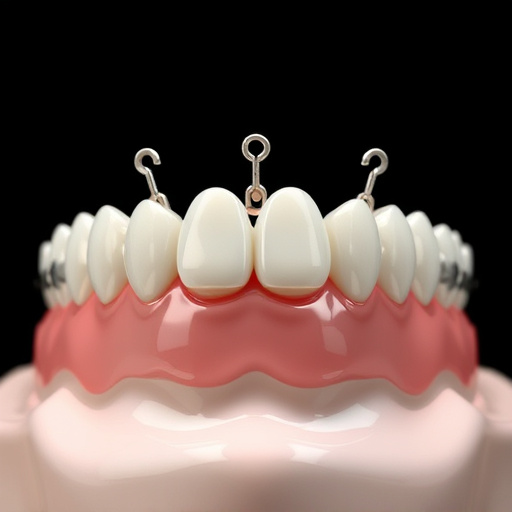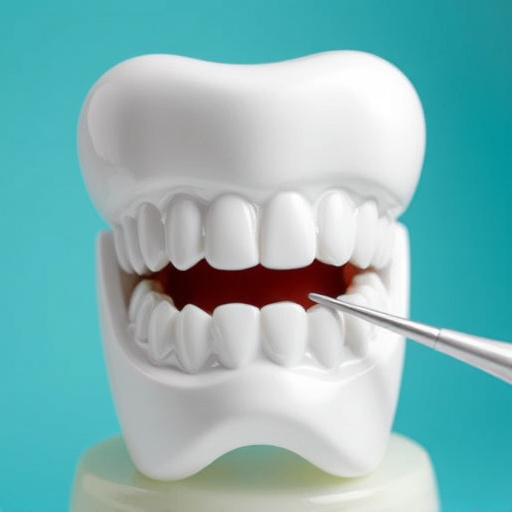Dental implants are a popular oral surgery procedure for missing teeth, providing a permanent and aesthetic solution. The process involves placing titanium posts in the jawbone, which osseointegrate to act as artificial roots, supporting custom-made crowns. After preparatory restorative dentistry, these implants enhance oral hygiene, chewing, speaking, and overall well-being by preserving bone density compared to alternatives like fillings or dentures. With various types suitable for individual needs, dental implants ensure improved oral health and quality of life through tailored oral surgery procedures.
Want to know about top oral surgery procedures? From restoring your smile with dental implants to correcting jaw alignment, understanding these treatments is crucial. This guide delves into three common oral surgery procedures: Common Dental Implants, Teeth Extraction, and Corrective Jaw Surgery. Each section breaks down the process, benefits, recovery, and considerations, empowering you with knowledge about these transformative options.
- Common Dental Implants: Restoring Your Smile
- – Understanding dental implants as a common oral surgery procedure
- – Types of dental implants and their benefits
Common Dental Implants: Restoring Your Smile

Dental implants have become one of the most popular oral surgery procedures, offering a permanent solution for missing teeth. These advanced restorations are designed to mimic the structure and function of natural teeth, providing patients with enhanced confidence and improved oral health. Common dental implants involve surgically placing titanium posts into the jawbone, which then fuses with the bone to create a sturdy foundation for artificial teeth. This process, known as osseointegration, ensures that the implant remains secure over time.
Restoring your smile through dental implants is a multifaceted approach. After the initial placement, patients often undergo restorative dentistry procedures like tooth extractions and teeth cleaning to prepare their mouths for the new implants. Once healed, custom-made crowns are attached to the implants, resulting in lifelike teeth that look, feel, and function just like natural ones. This advanced technology not only enhances aesthetics but also promotes better oral hygiene and overall well-being, making dental implants a top choice among oral surgery procedures.
– Understanding dental implants as a common oral surgery procedure

Dental implants have emerged as a popular choice among oral surgery procedures, offering a long-lasting and aesthetically pleasing solution for missing teeth. This advanced treatment involves surgically placing small titanium posts into the jawbone to serve as artificial tooth roots. Once healed, these posts provide a sturdy foundation for attaching custom-made dental crowns, creating a look and feel akin to natural teeth. Implants not only enhance chewing functionality but also preserve facial structure by preventing bone loss that often occurs with traditional dentures.
Compared to other oral surgery procedures like cosmetic fillings or dental crowns, implants offer superior durability and versatility. They are ideal for individuals who want a permanent fix for missing teeth due to various reasons such as decay, injury, or gum disease. Moreover, the procedure aligns well with preventative dentistry efforts, as maintaining healthy gums and bone density is crucial for long-term oral health and overall well-being.
– Types of dental implants and their benefits

Dental implants are a popular choice for oral surgery procedures, offering a permanent and aesthetically pleasing solution for missing teeth. These synthetic roots, typically made of titanium, serve as an anchor for dental crowns, bridges, or dentures. The benefits are numerous: they mimic natural teeth in both function and appearance, promoting better chewing and speaking abilities. Moreover, implants can prevent bone loss, a common side effect of tooth loss, by maintaining the density of the jawbone.
There are various types of dental implants, each suitable for different scenarios. For instance, endosteal implants are the most common, surgically placed within the jawbone, while subperiosteal implants sit on top of the bone and are covered with a protective membrane. Mini implants, smaller in size, are often used for secure denture retention or as temporary anchors before permanent dental fillings are placed. This versatility ensures that oral surgery procedures can be tailored to individual patient needs, enhancing overall oral health and quality of life.
Oral surgery procedures have advanced significantly, offering a range of options to improve your oral health and enhance your smile. From common dental implants that provide long-lasting solutions for missing teeth to various other surgical interventions, these procedures can transform your dental landscape. Understanding these treatments empowers you to make informed decisions about your oral care, ultimately leading to better overall health and increased confidence in your appearance.














